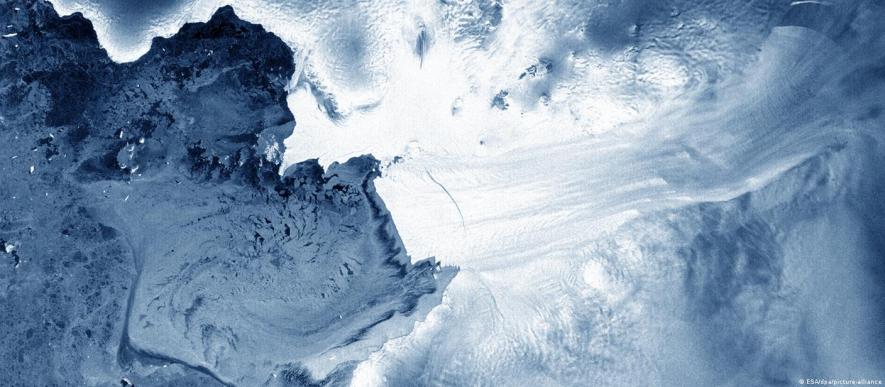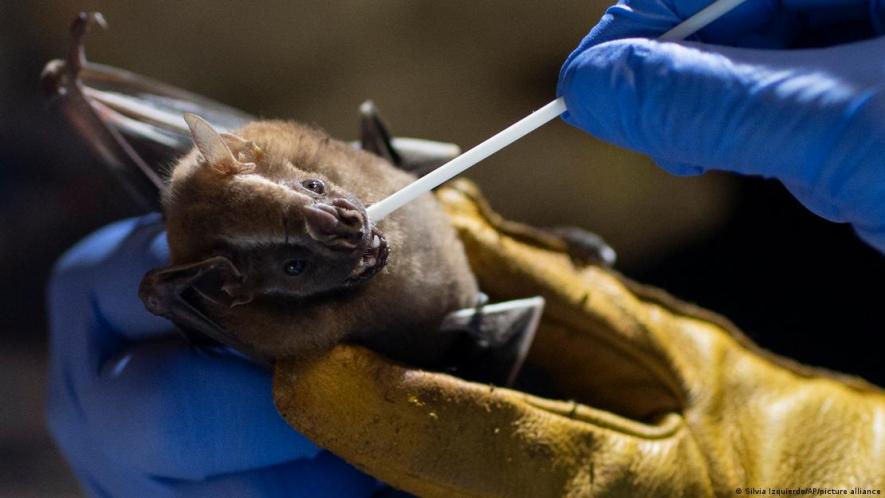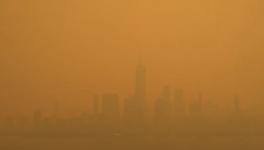Could Melting Glaciers Cause Future Pandemics?

Some of the worst epidemics in the past two decades have been the result of "viral spillover" — the infection and sustainable transmission of a virus to a new host.
The COVID-19 pandemic, SARS and MERS outbreaks and H1N1 are all examples of public health crises spurred by spillover events, generally from animals to humans.
As global warming continues, scientists are looking to understand the role that our altering climate will have on the spread of new viruses — and future pandemics.
In a paper published October 19 in Proceedings of the Royal Society B, scientists found that spillover events may already be occurring in the high Arctic, where glaciers are melting at the quickest rate in history.

Glacial melt is causing sea levels to rise, which can increase the frequency of major flood events in coastal areas like the Philippines, which have experienced record flooding in the past month
What did the scientists find out?
A 2018 study in Nature Communications showed that warming near Lake Hazan, which is the largest lake in the high Arctic by volume, has triggered large mass losses from nearby glaciers, resulting in "a ~10 times increase in delivery of glacial meltwaters, sediment, organic carbon and legacy contaminants to Lake Hazen."
For the new study about spillover events, researchers at the University of Ottawa in Canada collected samples of free-floating sediment and lake-bed soil from the lake, located north of the Arctic Circle on Canada's Ellesmere Island.
From the sediment and soil samples, the Ottawa researchers extracted DNA and RNA, which they sequenced to understand what types of viruses and hosts were present in the lake. They then created "trees of life" for the individual viruses and hosts, which helped clarify their specific genetic characteristics.
The construction of these "trees of life" allowed the researchers to compare the genetic features of samples from different parts of the lake in order to understand whether they were genetically similar — which would not imply a spillover event had or could occur — or whether they were genetically different — which would imply risk of a spillover event.
Although they did not notice much variation in the soil samples, the researchers found significant differences between hosts and viruses found in sediment from the lake — i.e. in places more likely to be impacted by glacial runoff.
"These results show that an increase in runoff volume in lake sediments significantly increases spillover risk," the authors wrote, noting that it could already be happening.
Likelihood of pandemic events low
The authors noted that predicting spillover risk is different from predicting pandemics caused by spillover events; the current likelihood of dramatic pandemic-like events happening in the higher Arctic area remains low "as long as viruses and their 'bridge vectors' are not simultaneously present in the environment."
Bridge vectors are the organisms that pass new viruses onto humans.
However, the authors noted, climate change will continue altering species ranges and distributions in the Arctic, which could eventually cause the emergence of new vectors that could mediate viral spillovers.
There's no evidence that is happening yet.

Teams of researchers are searching the globe for the next pandemic risk, swabbing animals to test their likelihood of causing of spillover eventsImage: Silvia Izquierdo/AP/picture alliance
Pandemic risk "vanishingly small"
David Pearce, an environmental microbiologist at the University of Northumbria, said that the paper offers interesting insight into microbial communities in remote regions like the high Arctic, but that the chances of the noted spillover events causing pandemics are "vanishingly small."
"I like what they've done — as a microbiologist, I find this study very interesting," he told DW.
However, the biological conditions necessary for a virus to infect humans are not well-supported in the Arctic ice, he said, which makes the possibility of pandemic outbreaks negligible.
Pearce primarily studies the polar ecosystem.
"With drill water from deep subglacial lakes, I drink it without second thought, because it's highly unlikely that anything in there has ever encountered a human body or is likely to be adapted to live in one," he said.
Pearce noted that it's possible there are fragments of DNA integrated in genomes that get released when the water melts.
"But for them to then excise themselves, express, become pathogenic, jump over the species gap, travel from the Arctic…we're far more likely to get another pandemic arriving from a very high-density human population that are intimately involved and associated with animals that have similar viruses that are actively growing up able to jump the species gap," he said.
Edward Holmes, an evolutionary biologist and virologist at the University of Sydney, agreed.
"I completely agree that climate change increases the chances of pandemics, but it is nonsense to think that this means melting glaciers pose a pandemic risk," he told DW. "None of the viruses found in this paper would likely infect humans, or probably even mammals. The vast majority are plant or fungal viruses, which is what you would expect from any environmental sample, anywhere."
He added that the study also only showed bits of virus gene sequence and that there's no evidence that any of these are fully infectious viruses.
Like Pearce, Holmes said he believes pandemics are far more likely to occur in densely populated areas.
"Pandemic viruses normally come from places where a high biodiversity and density of animals interact closely with humans," he said. "Even with climate change, this is unlikely to be the high Arctic. I would be much more worried about the tropics and subtropics."
Edited by: Carla Bleiker
Get the latest reports & analysis with people's perspective on Protests, movements & deep analytical videos, discussions of the current affairs in your Telegram app. Subscribe to NewsClick's Telegram channel & get Real-Time updates on stories, as they get published on our website.
























